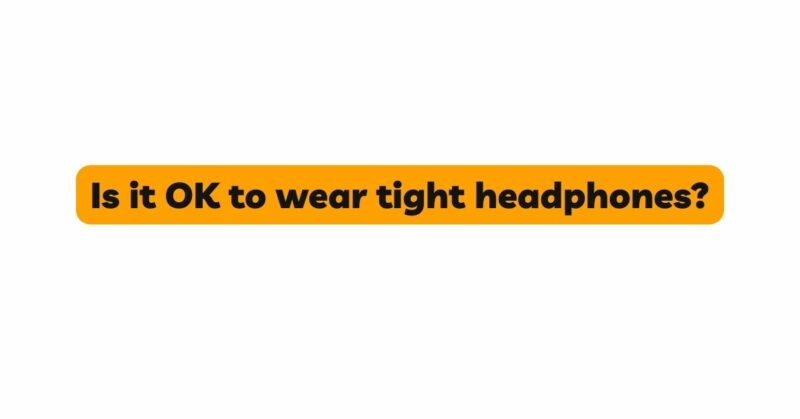Headphones have become an integral part of our daily lives, providing a means to escape into a world of music, podcasts, and audiobooks. They come in various styles, sizes, and designs to cater to different preferences. One style that has gained popularity over the years is tight or over-ear headphones, which provide a snug fit around the ears. However, with this rise in popularity comes concerns about the potential health implications of wearing such tight headphones. This article delves into the pros and cons of wearing tight headphones, examining the benefits they offer in terms of audio quality, noise isolation, and comfort, while also addressing the potential drawbacks related to hearing health, pressure-related discomfort, and long-term usage effects.
- Audio Quality and Noise Isolation
Tight headphones offer an advantage in terms of audio quality and noise isolation. The snug fit creates a seal around the ears, effectively blocking out external sounds, enabling listeners to fully immerse themselves in their chosen audio content. This enhanced noise isolation ensures a more enjoyable listening experience, especially in noisy environments such as crowded public transportation or busy offices.
The snug fit also enhances bass response, as it helps in preventing sound leakage and keeps the audio confined within the ear cups. This results in a more immersive sound with rich bass tones, which is highly desirable for bass enthusiasts and audiophiles alike.
- Comfort and Stability
One of the primary reasons people opt for tight headphones is the comfort they provide. The cushioned ear cups and headband help distribute the pressure evenly around the ears and head, reducing discomfort during prolonged usage. The secure fit of over-ear headphones prevents them from slipping off during physical activities, making them ideal for workouts or jogging.
Moreover, manufacturers have continuously improved the ergonomic design of tight headphones, taking into consideration the diverse head shapes and sizes of users. This has resulted in lightweight and adjustable headbands that cater to a wide range of comfort preferences.
- Potential Drawbacks of Tight Headphones
While tight headphones have their advantages, they also come with potential drawbacks that need to be considered.
a. Hearing Health Concerns
One of the main concerns regarding tight headphones is their potential impact on hearing health. Listening to audio at high volumes through any type of headphones can damage the delicate structures of the inner ear, leading to hearing loss or tinnitus. The snug fit of tight headphones may tempt users to increase the volume to drown out ambient noise, unknowingly subjecting their ears to dangerous sound levels.
It is crucial for users to be mindful of their listening habits and follow the 60/60 rule – limiting listening sessions to 60% of the maximum volume for a maximum of 60 minutes. Additionally, taking regular breaks during extended listening sessions can give the ears a chance to recover.
b. Pressure-Related Discomfort
While tight headphones provide comfort for some users, others might experience discomfort due to the pressure they exert on the ears and head. Prolonged usage of tight headphones can cause soreness or headaches, especially for those with sensitive skin or existing medical conditions.
Choosing headphones with memory foam ear cushions or opting for models with adjustable tension can help alleviate the pressure and make wearing tight headphones more comfortable.
c. Long-Term Usage Effects
Continuously wearing tight headphones for extended periods may lead to issues like sweat buildup and heat retention around the ears, potentially causing skin irritation or acne. It is advisable to take breaks and allow the skin to breathe to prevent such problems.
Furthermore, tight headphones may interfere with the natural airflow in the ear canal, creating a warm and moist environment that can foster the growth of bacteria, leading to ear infections. Maintaining good hygiene and cleaning the ear cups regularly can minimize this risk.
Conclusion
In conclusion, whether it is “OK” to wear tight headphones depends on individual preferences and listening habits. Tight headphones offer superior audio quality, noise isolation, and stability, making them a popular choice among users who seek an immersive listening experience and comfort. However, users must also be aware of the potential drawbacks, including hearing health concerns, pressure-related discomfort, and long-term usage effects.
To ensure a safe and enjoyable audio experience, users should follow safe listening practices, keep volume levels in check, take regular breaks, and maintain good headphone hygiene. Additionally, exploring different headphone styles and trying out various models can help find the best fit for one’s comfort and audio preferences. With the right balance, users can maximize the benefits of tight headphones while minimizing their potential risks, enjoying their favorite audio content with peace of mind.


